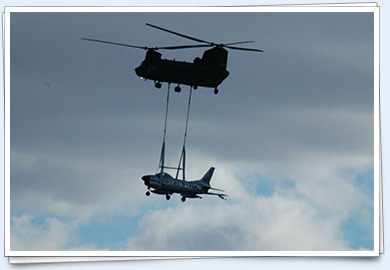| ||||||
| Pilot-run airport backs medical petition |
| |||||
| Click here for this week's custom content. | ||||||
FeaturedPilot-run airport backs medical petition | |
GA NewsOfficials confident industry ready for reboundIn announcing another year of declining aircraft shipments in 2011, general aviation manufacturing officials on Feb. 22 made it clear that the industry’s stagnant performance won't turn around without supportive policies from the federal government. Pete Bunce, president and CEO of the General Aviation Manufacturers Association, said a robust GA industry—which already registers a positive trade balance—can help President Barack Obama achieve his goal of doubling U.S. exports in five years, but the fragile industry needs onerous regulations, the threat of user fees, and penalizing tax policies removed from discussion in Washington. Read more and watch AOPA Live >> GA market flat, but faces changeA generation ago, the top piston-aircraft producers were as predictable as the top auto manufacturers. Cessna, Piper, Beechcraft, and Mooney were the GM, Ford, Chrysler, and everybody else of the auto world. Today, the world looks quite different. As has happened in the auto market in the past 20 years, foreign aircraft manufacturers have made great inroads into the U.S. markets. Read more and watch AOPA live >> Flying the Pacific on 93 gallons of fuel AOPA launches student pilot support toolStudents have a powerful new tool available to help them track the progress of their flight training with AOPA’s new MyFlightTraining website. MyFlightTraining takes the content of Flight Training magazine and personalizes it for students anywhere in the flight training curriculum. The site is based on the feedback AOPA received in its research about the ideal flight training experience. Read more >> Carburetor AD affects an estimated 10,700 U.S. aircraftThe FAA has issued an airworthiness directive (AD) requiring inspection, and possible maintenance, of HA-6 carburetors installed in an estimated 10,700 Lycoming engines. A loose mixture control sleeve on certain "machined from billet" versions of the HA-6 can dislodge in flight, obstructing fuel flow and potentially causing the engine to shut down. The AD is effective March 27. iPads talk to GPSAn Apple iPad application allowing pilots to program a Garmin 430W/530W directly from an iPad is now available from VoiceFlight Systems. The program, available free from iTunes, translates text flight plans into speech, programming complex flight plans in seconds—with no twisting of knobs. VoiceFlight President J. Scott Merritt gave AOPA Online a sneak peek in advance of the new application's Feb. 22 release. The Connected Talker program requires an audio cord to connect the iPad to the VoiceFlight unit; the cord is available for $25 from VoiceFlight. iPhone border crossingsPilots with iPhones can use the ubiquitous devices to file eAPIS notifications on international flights thanks to a free application from FlashPass.net. The company that developed a more streamlined system for storing information and filing passenger manifests with the U.S. Customs' Electronic Advance Passenger Information System has done the same thing for the iPhone. The software firm is also working on a version for the iPad. "It's all about making eAPIS filing easier, quicker, and less prone to errors," said Arturo Guerra Perez, a principal at Lobo Labs, which developed FlashPass in 2009. "Computers with Internet access aren't always available when and where pilots need them. Now, they can use the iPhones that so many in the aviation community already carry." NASA finds space winds to brag aboutNew Hampshire may still be smarting from the 2010 loss of a long-held wind record, when an anemometer in Australia clocked a 253 mph gust during a cyclone, eclipsing the previous terrestrial record of 231 mph recorded in 1934. NASA announced Feb. 21 that another record has been shattered: The Chandra X-Ray Observatory clocked a wind blowing at 20 million mph, about 3 percent of the speed of light, around a "stellar mass black hole," a type of black hole created by the collapse of a massive star. Researchers called it the cosmic equivalent of a Category 5 hurricane, a wind that ranks among the fastest in the cosmos. Future generations of space travelers might expect a sigmet on that: intense winds, inescapable gravitational field. A big no-show: The mild whimper of 2011-2012 | ||||||||||||||||||||||||||||||||||||||||||||
Flight Instructor Refresher Clinics | Air Safety Institute Safety Seminars | |||||||||
For a complete schedule, see AOPA Online. Can’t make it in person? Sign up for the CFI Refresher Online. |
Topics vary—for details and a complete schedule, see AOPA Online. | |||||||||
ADVOCACY
Pilots in Pacific Northwest could face $100,000 fines
Slated to take effect Feb. 27, a new regulation would enable the National Oceanic and Atmospheric Administration to impose fines of up to $100,000 for flying below 1,000 to 2,000 feet msl over sanctuaries in the Channel Islands, Monterey Bay, and Gulf of the Farallones National Marine sanctuaries in California and the Olympic Coast National Marine Sanctuary in the state of Washington. AOPA and the Experimental Aircraft Association have joined forces seeking to at least delay implementation of a new rule that could bring six-figure fines to pilots who traverse airspace that federal officials have yet to chart. Read more >>
Proposed FAA budget cuts grants, tax incentives
Industry leaders are preparing for another fight over user fees, but the president's proposed budget is also drawing criticism on other fronts. The latest White House push to impose fees on turbine general aviation and commercial flights was not unexpected, and members of Congress are working to rally opposition to the $100-per-flight fee. President Barack Obama's FAA budget proposal for fiscal 2013 also would slash airport improvement grants by $926 million for large and medium hub airports; the administration proposes to offset this cut by asking Congress to grant these airports the authority to increase passenger facility charges to pay for new airport projects. Read more >>
User-fee resistance on the move, again
General aviation’s supporters in Congress are moving again to resist the Obama Administration’s latest effort to impose fees on users of the air traffic system. Four key House members are urging colleagues to sign a letter to the president, urging him to drop a $100-per-flight fee proposed in the White House’s 2013 budget package. “This fee would have a devastating impact on commercial and general aviation, as well as the aviation manufacturing industry,” they said in a letter inviting fellow lawmakers to join the fight. Read more >>
GAO report focuses on NextGen costs, scheduling
Costs that exceed estimates by $4.2 billion and widespread scheduling setbacks highlight a new Government Accountability Office (GAO) report to Congress evaluating FAA acquisition programs to implement the transition to the Next Generation Air Transportation System. The GAO report faulted the FAA for its cost estimating methods, and for failing to adopt "best practices" that the GAO had previously recommended for managing FAA programs. Read more >>
Wind farm could be hazard to VFR flights
AOPA is urging the FAA to find that 130 wind turbines proposed for Nantucket Sound near Cotuit, Mass., would pose a hazard to the many low-altitude VFR flights between three area airports. The turbines could also disrupt local radar service, AOPA said. AOPA reiterated its position on the proposed Cape Wind turbine project during a public comment period the FAA has opened as part of a new aeronautical study of the turbines. Read more >>
Member Benefits
Fly well
Kidneys filter 400 pints of body fluid per day, discarding 1 percent as urine. Waste products are removed while important elements such as sodium and potassium are balanced, and water concentrations kept correct. Diseases damaging kidney filtration cause predictable signs, as failure to filter properly allows goop accumulation, impairing human function—sounds like an aircraft fuel system. Kidney disease may be prevented by staying fit, thereby lowering blood pressure, cholesterol, and diabetes risk. Read more >>
Medication update: FAA changes Nyquil-use guidelines
The FAA’s guidelines for use of Nyquil have changed, and now require a wait time of 60 hours after the last use before flying. This is pretty conservative, even for the FAA. Read more >>
AOPA Career Opportunities
Ever dream of turning your passion for aviation into a career? We’re looking for an associate project manager, online product manager, marketing specialist–products, aviation education program developer, accounting manager, and associate editor–Web/ ePilot. To learn more about other AOPA career opportunities, visit AOPA Online.
Community
Picture PerfectAOPA’s online photo gallery allows you to upload your own aviation photography as well as view, rate, and comment on others’ photos. Your favorite aviation images from AOPA Pilot are still available online through this new gallery. Take a look, and submit your own photos! | | |
Rally GACheck out user-submitted events from your region. To include an event or to search all events in the calendar, visit AOPA Online. AOPA does not endorse the events listed below, nor have ePilot editors edited the submissions. AOPA assumes no responsibility for events listed.
Feb 25—Columbia, S.C. Spend an afternoon with the Red Tails and enjoy a discussion about the Tuskegee Airmen at the Jim Hamilton L.B. Owens Airport from 2:30 to 4 p.m. The free event will take place in the airport terminal lobby. For more information, call 803/576-2065.
| |
| |
QUIZ ME!Here’s a question asked by an AOPA member who contacted our aviation services staff through the AOPA Pilot Information Center. Test your knowledge.
Question: I recently flew my airplane above the advertised service ceiling that is outlined in its pilot’s operating handbook. Nothing seemed to be awry with the operation, but was I breaking a regulation?
Answer: Indeed, whether you knew it or not at the time, you may have. During an aircraft's certification process, operating limitations are determined based upon test flights in order to come up with safe aircraft operational parameters. FAR 23.1527 states, “The maximum altitude up to which operation is allowed, as limited by flight, structural, powerplant, functional or equipment characteristics must be established.” Additionally, Part 91 regulations must be followed. FAR 91.9 states, “…no person may operate a civil aircraft without complying with the operating limitations specified in the approved Airplane or Rotorcraft Flight Manual, markings, and placards, or as otherwise prescribed by the certificating authority of the country of registry.”
Got a question for our aviation services staff? The AOPA Pilot Information Center is a service available to all members as part of the annual dues. Call 800/USA-AOPA (800/872-2672), or email to [email protected]. |
| |
| |
| |
| | ||||
| ePilot Editor: Sarah Brown | Contributors: Alyssa Miller Jim Moore Jill W. Tallman Warren Morningstar Alton K. Marsh | | Production Team: Melissa Whitehouse Siobhan Byrne Lezlie Ramsey Mitch Mitchell William Rockenbaugh | Advertise in ePilot: |
| Member Tools: Send feedback | ePilot Archive © 2012 Aircraft Owners and Pilots Association | 421 Aviation Way Frederick, MD 21701 | Phone 800/USA-AOPA | Fax 301/695-2375 | ||||




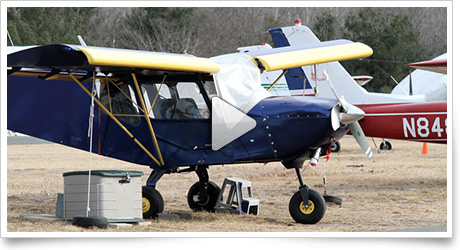
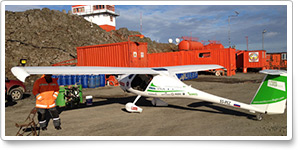
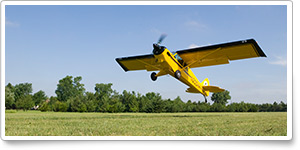
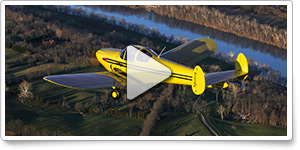
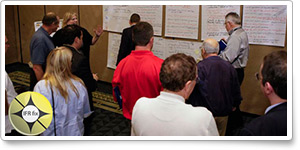
 If you are considering buying an aircraft, don’t miss AOPA’s “Tips on Buying and Owning Aircraft” Webinar on Wednesday, Feb. 29. AOPA senior aviation technical specialists will discuss the aircraft buying process from searching for the right aircraft to holding the keys in your hand. Plus, you’ll hear the first-hand purchasing experience of an aircraft owner and learn some ownership tips. Representatives from the AOPA Aircraft Financing Program, AOPA Insurance Agency, AIC Title Service, and AOPA Aircraft Partnership Program also will be on hand to answer questions. Register for the
If you are considering buying an aircraft, don’t miss AOPA’s “Tips on Buying and Owning Aircraft” Webinar on Wednesday, Feb. 29. AOPA senior aviation technical specialists will discuss the aircraft buying process from searching for the right aircraft to holding the keys in your hand. Plus, you’ll hear the first-hand purchasing experience of an aircraft owner and learn some ownership tips. Representatives from the AOPA Aircraft Financing Program, AOPA Insurance Agency, AIC Title Service, and AOPA Aircraft Partnership Program also will be on hand to answer questions. Register for the 